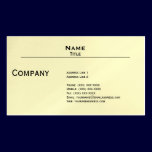Who Develops New Products?
Responsibility for new product development varies depending on the company's policy. Some companies have product managers who are responsible for developing new products and managing existing product lines. Other companies might have a new product manager who's specifically charged with developing new products. Research and development departments functional business units in charge of researching target market needs and creating products to satisfy those needs. Often, an executive manager must approve a new product plan before product managers begin physical creation.
Idea Generation and Product Testing
Proactive development of different products often follows a similar processes. First, product developers generate the idea of the product and then conduct target market research to determine if the product die is worth consideration. The product idea should be screened by other managers and company executives to ensure that it meets organizational standards, objectives and strategy. During the physical development of the product, developers often test prototypes of the product on target market members, using focus groups and test markets.
Marketing and Product Strategy
Once the product is out of concept testing, the developers must work with a marketing team to develop a marketing strategy. Marketing strategies should be feasible and affordable. A business analysis of the product allows organizational leaders to determine if the product will overcome development costs and marketing expenses and become profitable. The development is complete when the developers, markets and executives are certain that they have a commercially valid product.
Quality Function Deployment
Translating the needs of the target market into a working product prototype is sometimes known as quality function deployment, or QFD. QFD methodology involves taking the list of attributes the customer desires and turning it into a list of engineering attributes that can be used to create the product. This method requires compromise between consumer desires and product feasibility. Communication between consumers, marketers and engineers drives the proactive QFD development model.

___________________________________
___________________________________
Custom Business Cards
$86.55 - Sales Rep Business Card





No comments:
Post a Comment